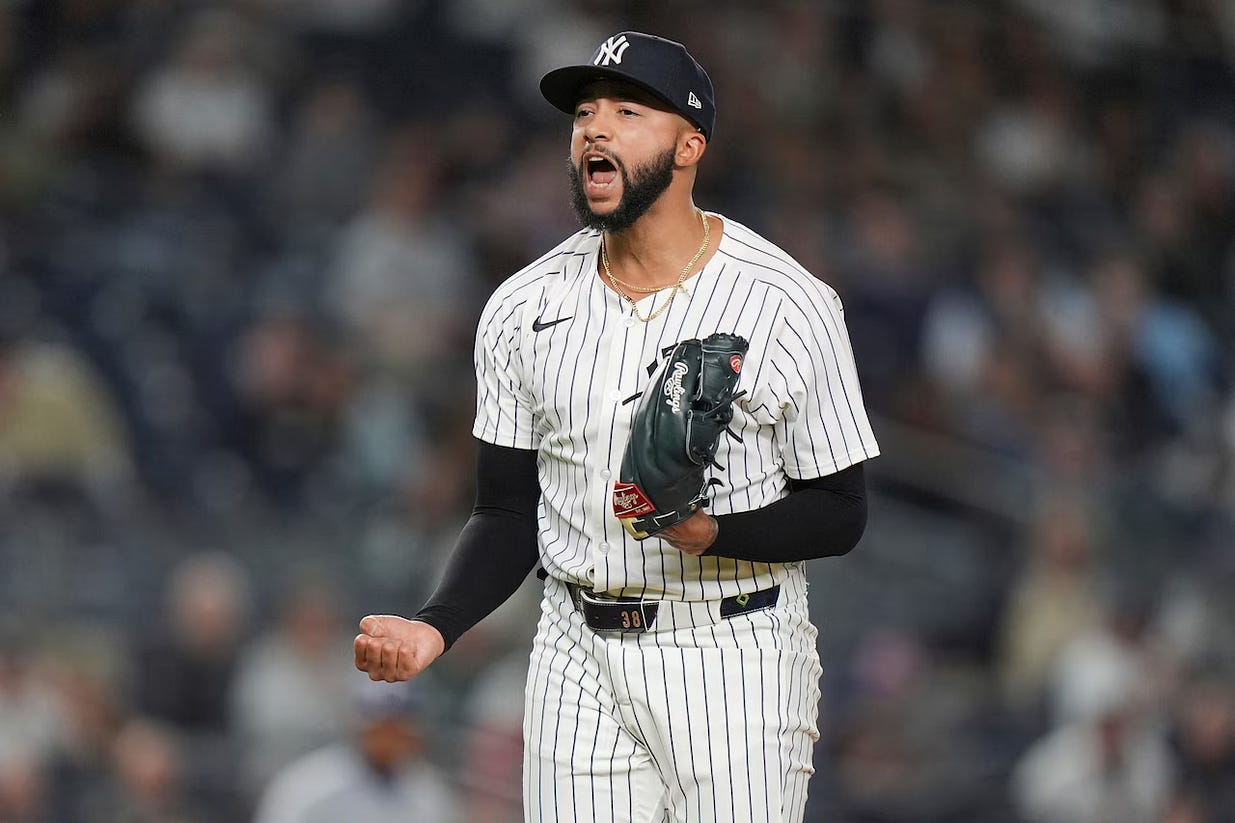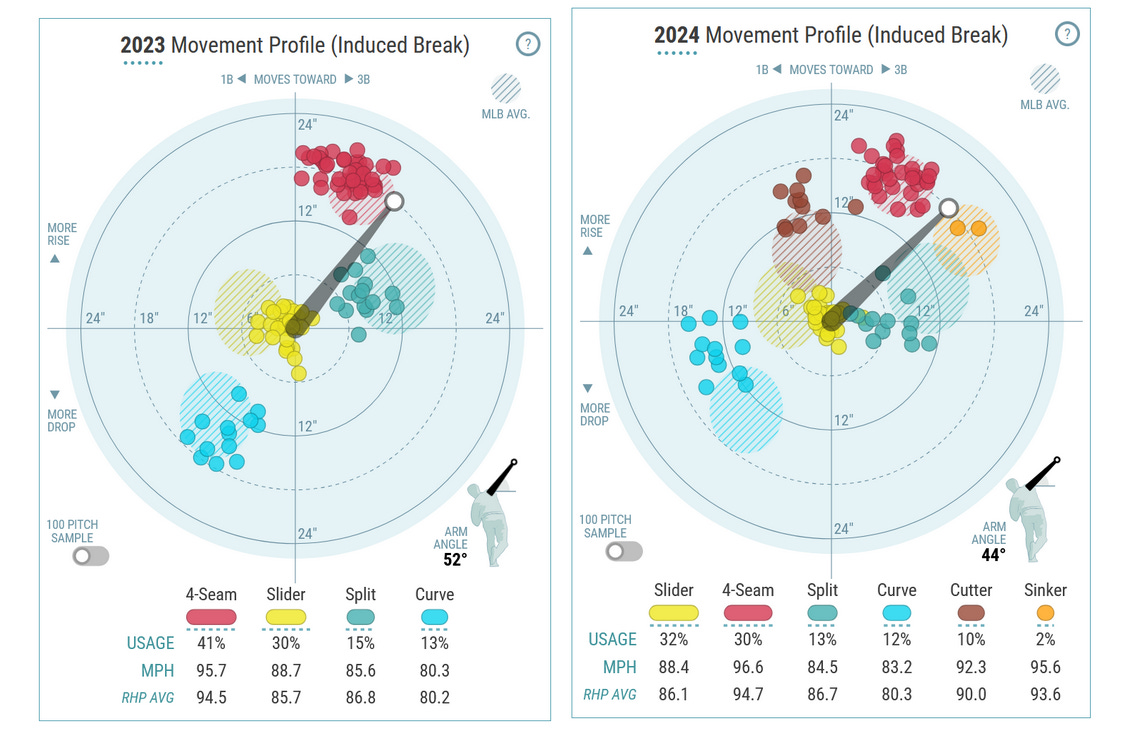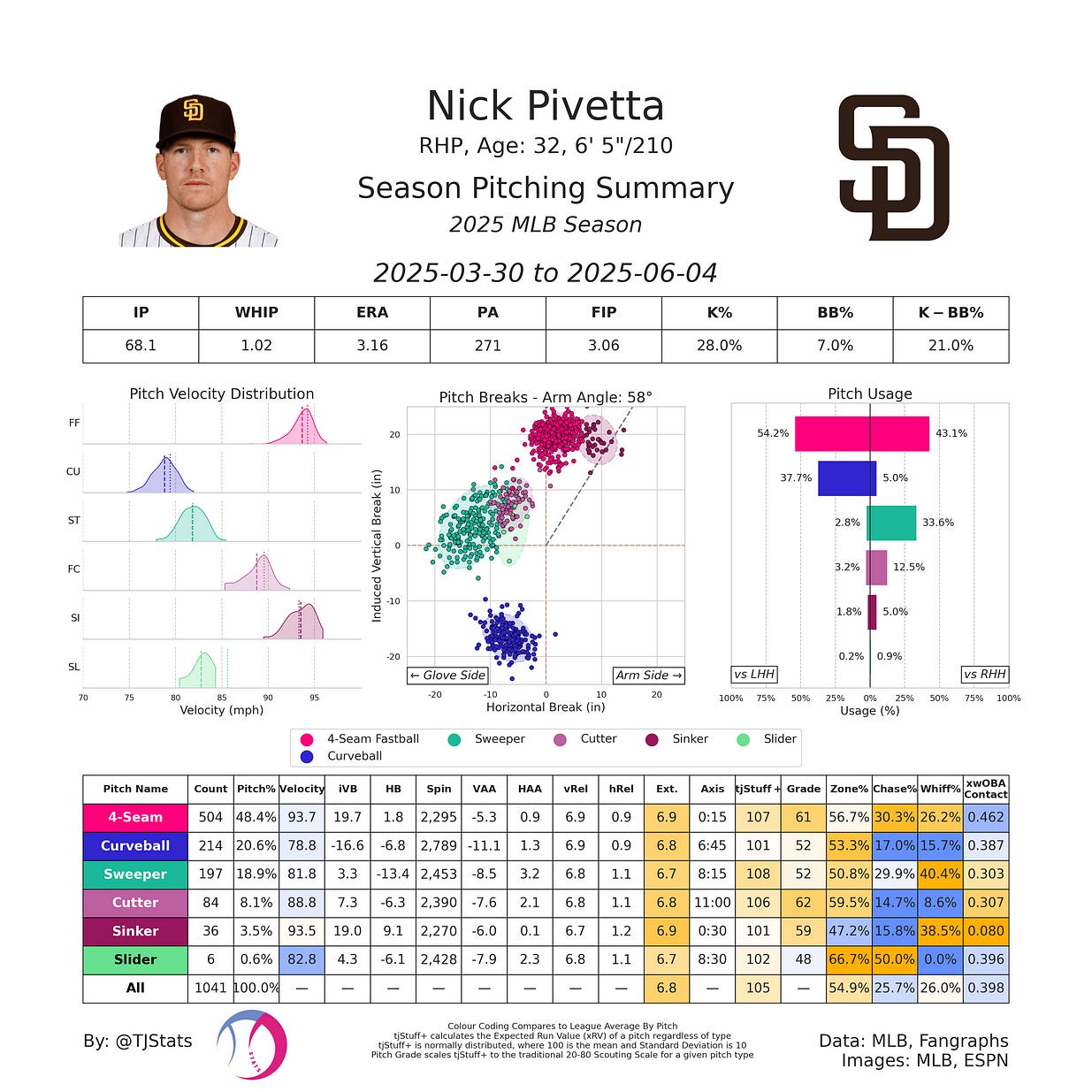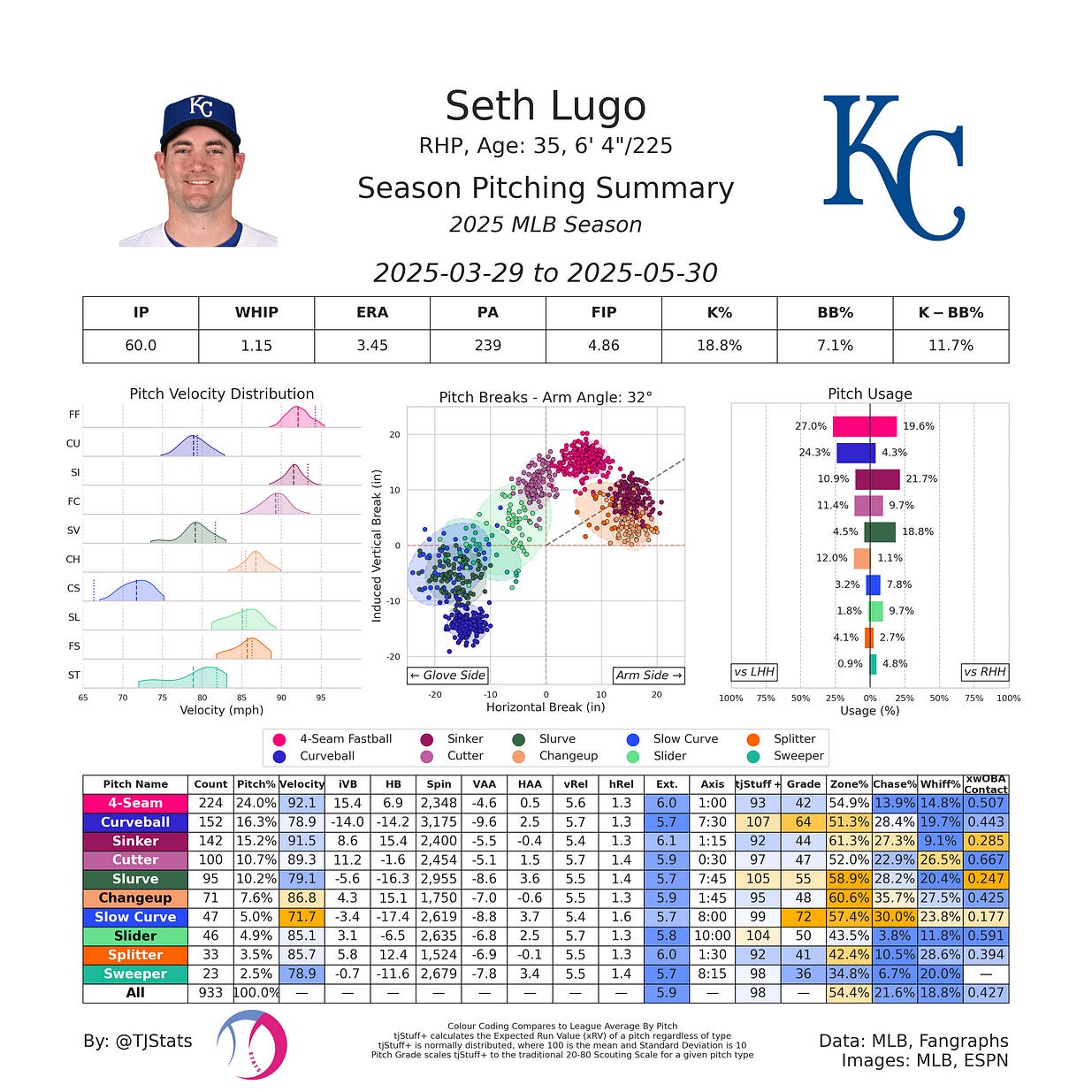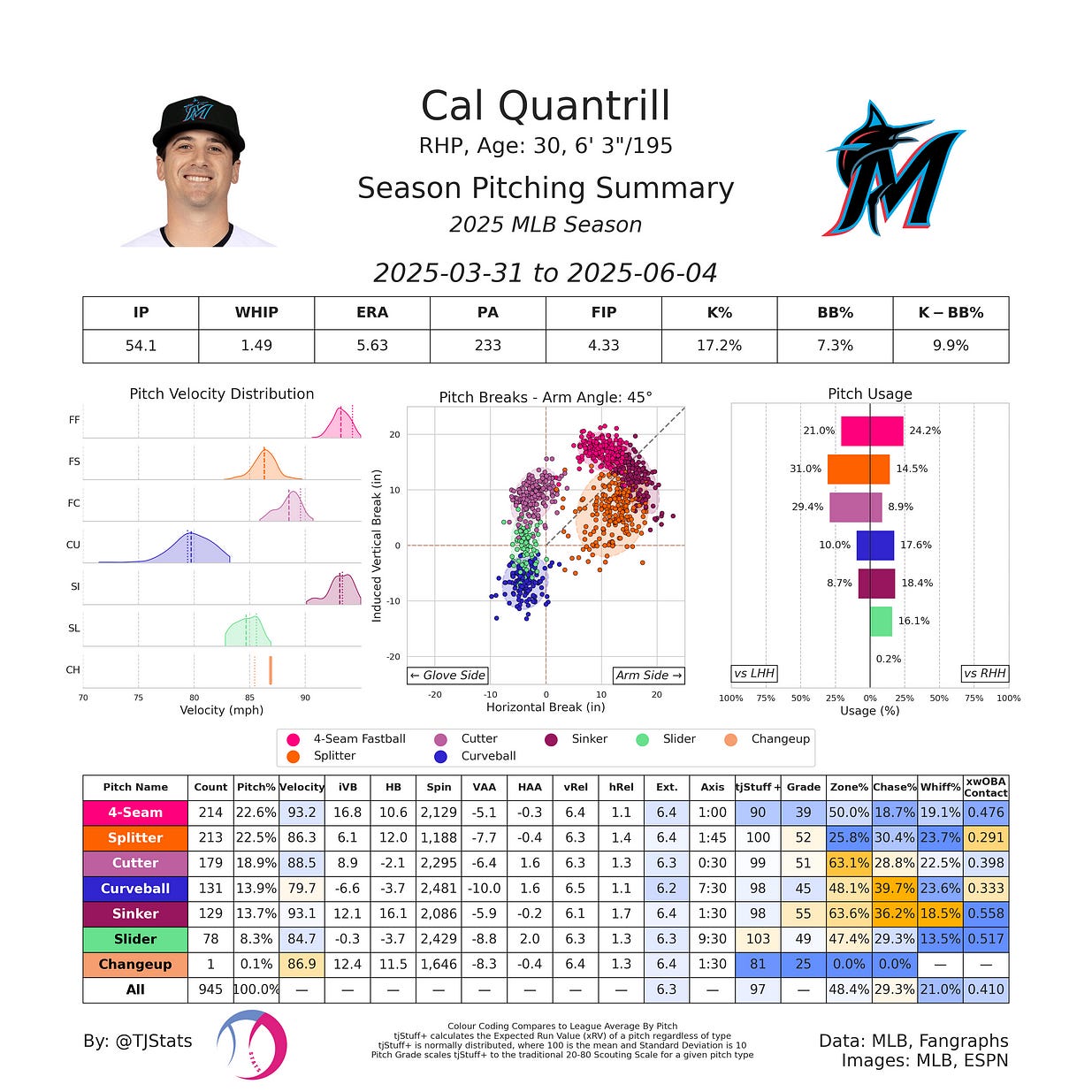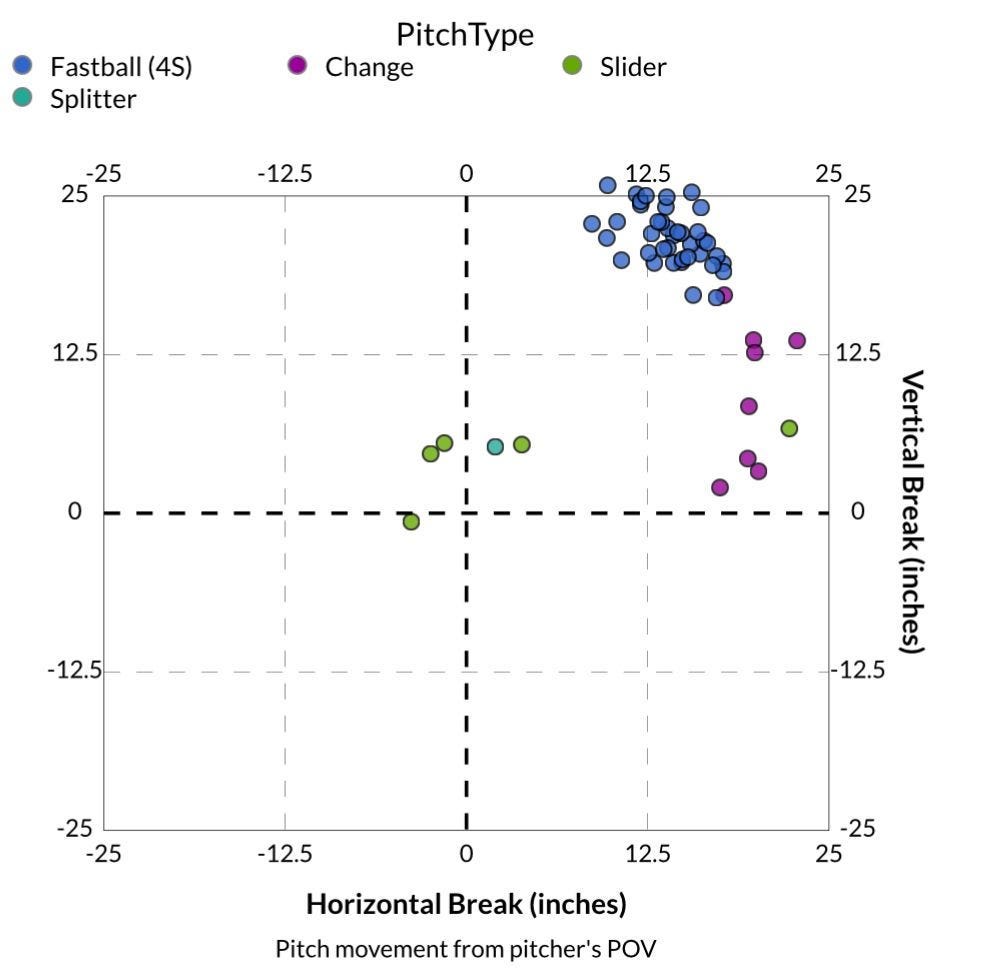This article needs to be published now more than ever. There is a lot of confusion on this topic because it is nuanced. Is player X a pronator? Is player Y a supinator? But here’s the biggest question of all: Does it matter? I’ll delve into my understanding of pronation and supination, the role of pronation-supination, and the way that seam effects play in arsenal construction.
What is Pronation?
Pronation is when the wrist becomes closed or internally rotated as the ball is being released. Technically, all throwers pronate when they throw the ball, but the difference in wrist angle at release and shaping ability is what creates this spectrum.
Think about how pitchers turn over Change-ups or get behind Fastballs. A pronator is an athlete who flashes a good Fastball shape with high spin efficiency, a quality Change-up, and a limited Slider shape. Think of Tread Athletic’s Pronator Triangle: Fastball, Gyro, and Change-up shape.
A good rule of thumb was 90 to 100% spin efficiency; however, this rule has changed. A pitching analyst or coach should not only use spin efficiency to determine bias but also use slo-mo video to see the wrist at release, look at the player’s movement plot, and observe the ‘throw’ of the athlete.
A couple of popular pronation-biased pitchers with MLB success are Devin Williams, Ryan Pepiot, and Jose Urena.
What is Supination?
Supination, on the other hand (or in this case, wrist angle), is when the wrist is open at release or the forearm is externally rotated. Supinators are usually characterized by seam-shifted pitches like seam-shift Sinkers, Sweepers, and cut-ride Four-Seamers. These supinators also throw the ‘Supinator Special’, in which they throw multiple breaking ball shapes.
Supinators cut the ball to get to their pitch shapes. Imagine ‘holding a bowl of soup’; that’s a supinated wrist/arm position.
Some popular supinators are Corbin Burnes, Max Fried, and Griffin Jax.
Besides the two pitches shown being different pitch types, the point is to emphasize wrist position at release being in either a pronated or supinated state.
What creates pronation or supination in the throw?
This section is the most important part of the article. How one ‘gets’ to their wrist orientation creates ball-flight (paired with seam orientation/grip, which we’ll get into later). I am still learning these aspects myself.
The body takes the path of least resistance.
Everything leads to ball-flight data. A rough understanding of how a thrower gets to their end-point or release is Pelvis → Torso → Arm. If a player has early torso rotation, they will cut the ball unnecessarily at release. If a player has minimal ‘hip-shoulder separation’ or pelvis-tipping, they could push the ball later in ball-flight as opposed to throwing it, causing velocity and shape issues. If a pitcher’s plane of rotation changes, and they start to get scoopier in their throw, they will get into more supinated positions.
Intent is another way in which supination and pronation are created. If a pitcher isn’t throwing at their highest intent, they won’t get behind the ball well or apply the most efficient force as they get to the end ranges of motion. I’ve seen this happen with athletes where they will be at the farther end of the pronation spectrum, 95%, and in a max-intent bullpen, they will sit around this spin efficiency. However, in lower-intensity bullpens, their spin efficiency declines as does their velocity.
There is also a hand limitations aspect to this question. Some guys are physically limited in getting to pronated or supinated positions. A pronator could have difficulty throwing a Sweeper, and a supinator could have difficulty turning over a Change. Some throwers also have chronic issues that lead them into supination or pronation; Tyler Glasnow and his carpal tunnel are to credit for his unique cut-ride heater.
The pitch type that a player throws is important to how their wrist moves in the throw; think about how a pitcher is cued into turning over a Change versus a football cue for a gyro Slider.
A lot of the things go into wrist positions, but these limitations are not the end-all be-all.
When does pronation-supination matter?
This idea doesn’t matter (and pitch design by extension) for throwers under ~90 mphs. When a thrower is sub 90, they need to focus on gaining strength or mobility and working on their throw to maximize velocity. How are they filling their buckets of strength, skill, mobility, etc?
This dynamic matters when leaning into a player’s strengths or if a player loses velocity on their fastball. If a guy is tapping out of his strengths to throw a certain pitch, then he needs to reconsider what makes his pitching style unique. If a player loses velocity by prioritizing cut or getting to a certain shape through compensations, he needs to know his identity. Preserve their uniqueness.
I think this idea matters when considering arsenal design and versatility, but overall, seam effects push the natural lense of each bias out of the way.
A New Way of Looking at Pronation-Supination
The main goal of analyzing pitchers in this way is to lean into your strengths and uniqueness. This idea still applies to most throwers, and the way forward applies to the dynamic of Breaking Ball Ability (wrist talent or spin ability) vs. Fastball (or Off-Speed Quality).
Orion Kerkering really broke the Pronation-Supination dynamic for me; he’s a high-efficiency Fastball thrower with upper 90s velocity and a double plus Sweeper — all which seems contradictory in terms of natural biases. Nick Pivetta also creates multiple supinated pitches even though he has a high efficient Fastball.
For each case I will talk about an MLB pitcher and a pitcher I work with for the classifications.
Regarding Breaking Ball Ability, it’s been called many different things by analysts and scouts. Referred to as wrist talent, supination ability, etc, it describes the ability of a player to throw a multitude of breaking balls, usually with one pus breaking ball. The thrower orients their wrist in many ways to develop numerous breaking ball types.
The MLB pitcher who is the exemplar for this ability is Seth Lugo. He throws a high-spin curveball and has exceptional feel to throw and develop almost any pitch, especially breaking balls. He’s up to 11 pitches this year.
I worked with athlete Sam Brady these last two years at LMU. Similar to Seth Lugo, he throws a 3000 rpm Curveball and can throw almost any breaking ball shape. He added a Sweeper with a plus shape from a single grip orientation change. The wrist talent is clear.
On the other side of the spectrum is the Fastball specialist. A lot of pitcher that the Brewers target show this pronation ability. The MLB pitcher I want to focus on is Cal Quantrill. Notice his unique ability to get carry behind the ball, generate multiple Fastball shapes, and throw that plus Off-Speed.
I also worked with Jacob Fried at LMU, and he was a pitcher that fell into this extreme Fastball quality and Off-Speed shape spectrum. We tried developing a multitude of breaking ball shapes, and the one we ended up using was a spiked breaking ball grip.
How is my idea different from the Pronation-Supination stuff out there? I advocate leveraging seam effects to create more shapes for pitchers. As opposed to focusing on a pitcher’s natural tendencies, I want to use seam effects, which is a combination of seam orientation and wrist position/orientation, to give players as many options as possible.
If we were sticking with the Pro-Sup dynamic as opposed to being creative and leveraging seam effects, we would have never developed Jacob’s breaking ball.
The Role of Seam Effects
Seam effects are everything in today’s game.
Leveraging how the ball moves through grip (seam orientation) and how a pitcher releases it (wrist position/orientation) is the current state of the game. Spiking a breaking ball or changing an axis or adding a pitch to a pitcher could earn them tons of money and ensure continued playing time — look at Kansas City and their pitch additions to veteran arms.
Optimizing seams and grips to achieve the best shapes for players is essential. Using simplistic cues to minimize negative compensation patterns and orienting seams properly achieves movement that public-facing analysts thought were impossible for certain pitchers.
Pitchers and coaches should play around with grips and see what works.
I will be publishing more content on seam effects in article format and on Twitter; Seam Stamps is a great resource for how certain orienations paired with certain types of throwers result in ball-flight changes:
https://seamstamps.com/
.
Questions for Future Investigation
Does the spacing of fingers on grips lead to pronation-supination in ball-flight?
Is there an injury risk in players tapping into more or less supination or pronation?
Can we train supination and pronation ability to create more capacity and workload for various pitches?
Thank you for reading and be sure to follow my Twitter and Medium for more content!



